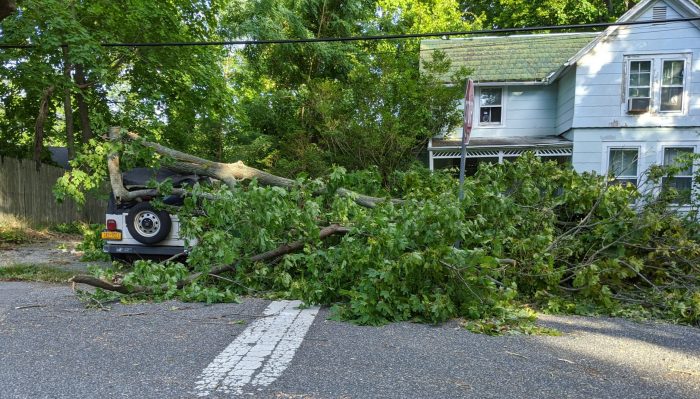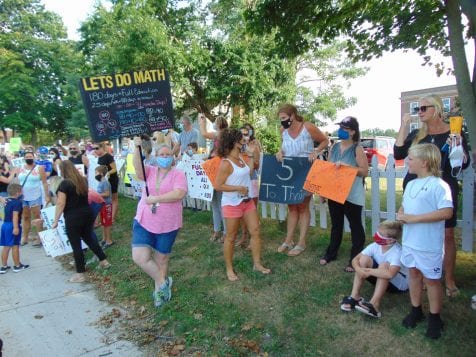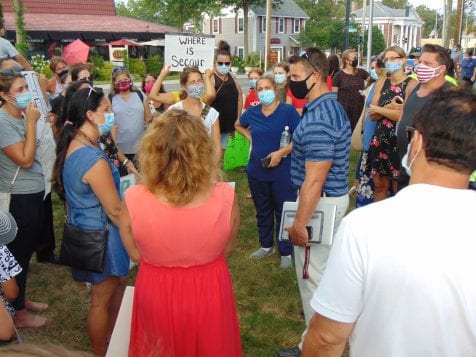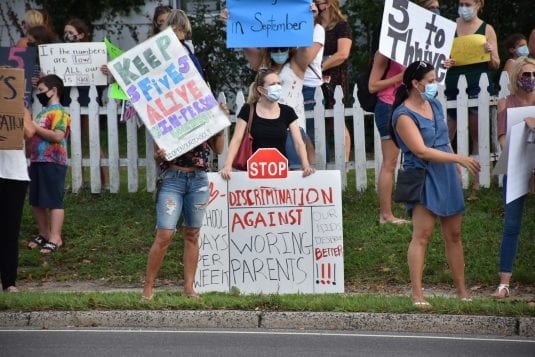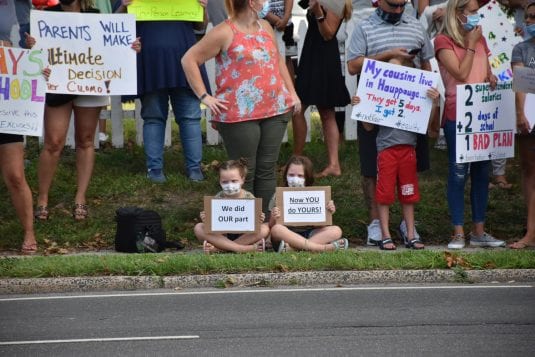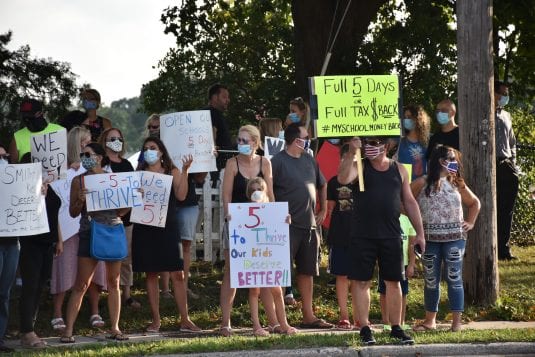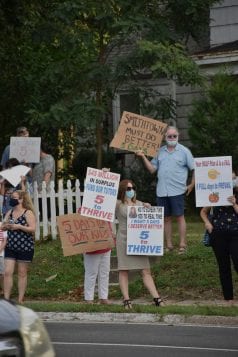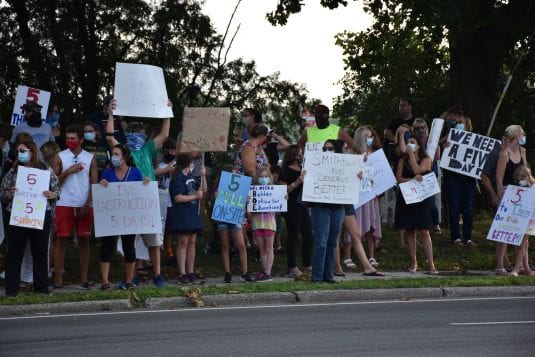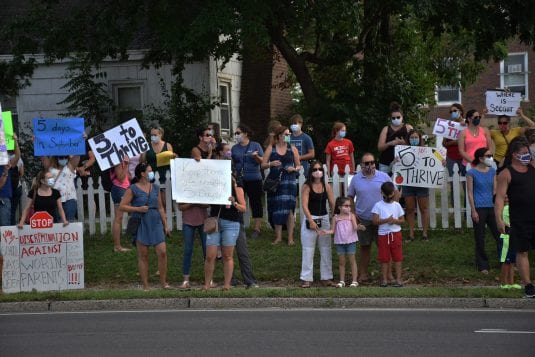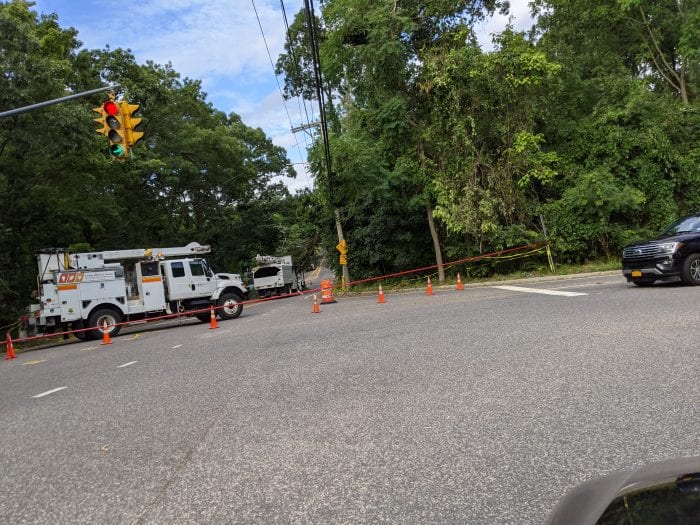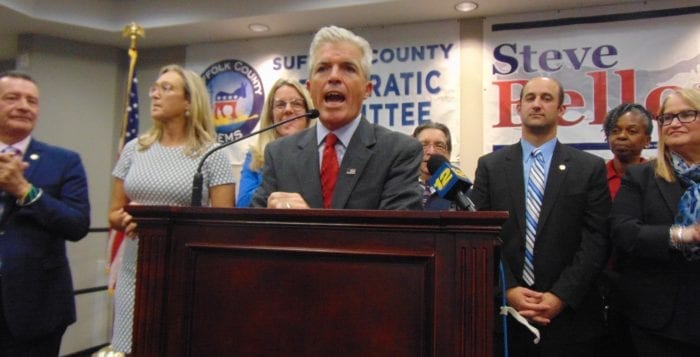After doing heavy lifting to ensure customer and employee safety, gyms can begin to reopen soon.
Suffolk County Executive Steve Bellone (D) announced a gradual gym reopening starting this Monday, Aug. 24. This comes after earlier this week Gov. Andrew Cuomo (D) said gyms can start to reopen once they receive guidance from local government.
Commercial gyms, such as Planet Fitness, LA Fitness, Retro Fitness and those that require a membership fee, along with indoor classes can restart next week.
Each fitness center will have to pass a county health inspection to make sure the gyms have sufficient procedures to protect staff and customers while following state guidelines established by Cuomo.
Hotel, office, higher education and residential gyms can reopen starting the following week, on Aug. 31.
On Thursday, Aug. 20, the county will host a virtual meeting with facility owners to review guidance, answer questions and provide any clarifications.
“With our infection rate holding steady at or below 1 percent and a robust testing system in place, we are confident we can reopen gyms in a way that is both safe and responsible,” Bellone said in a statement. “I want to remind our residents and gym owners that we are still in the midst of a pandemic.”
Bellone encouraged those attending gyms to wear a mask and follow all safety procedures.
Communal showers, whirlpools, saunas and steam rooms and water fountains and self-serve bars and samples must remain closed. According to the governor’s web site, individual showers and stalls can remain open as long as they are cleaned between use.
Classes are restricted to the most restrictive guidelines, which could either be six feet of distance in all directions from a participant, a limit of 33 percent capacity and no more than 50 people.
Gym owners also must provide sanitizing stations, acceptable face coverings, which exclude bandanas, buffs and gaiters and the limitation of physical contact activities including boxing and martial arts.
During each inspection, businesses will receive a gallon of NYS Clean hand sanitizer.
According to Cuomo, local health departments are required to inspect gyms prior to reopening or within two weeks of reopening, to ensure strict adherence to the state Department of Health guidance.
Indeed, the Suffolk County Department of Health Services will begin inspections on Monday, Aug. 24 for commercial and traditional gyms.
“New Yorkers must closely adhere to the guidelines and local health departments are required to strictly enforce them to help ensure gyms and fitness center reopen safely and protect the public health,” Cuomo said in a statement.
The Suffolk County Department of Economic Development and Planning will work with the Suffolk County Department of Labor, Licensing and Consumer Affairs and the Suffolk County Department of Health Services to create an online database of gyms and fitness centers within the county.
Before an inspection, gym owners will need to complete the affirmation for each location, which owners can find at the New York Forward website forward.ny.gov, that they reviewed and understood the state guidelines and will implement these protocols.
After owners attest to their safety plans, the county will schedule inspections. Suffolk will send out an email with the date and approximate time for an inspection.
Gym owners need to post a written safety plan describing the ways they are protecting employees and gym members from COVID-19.
Cuomo also requires that gyms use a MERV-13 or greater air-handling system. If the gym can’t operate at that level, the owners need to have a heating, ventilation and air conditioning professional document their inability to use such a system and adopt additional ventilation and mitigation protocols from the American Society of Heating, Refrigerating and Air-Conditioning Engineers and the U.S. Centers for Disease Control and Prevention.


